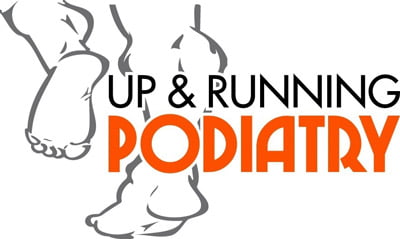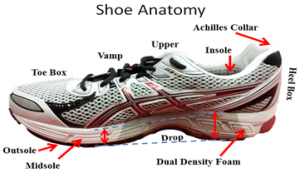With the amount of variations and updates in running shoe technology it can be overwhelming in deciding what shoe to choose. This is made or the more difficult with so much noise coming from different health, athletic and and armchair experts. Before we delve into the concept of the “evil” supportive running shoe, below is a clear outline of the universally accepted, key components that make a shoe “supportive”.
a) Foam density and thickness of the midsole. The midsole is the “engine room” of the shoe, it determines initial shock attenuation and rebound energy. Lower density/softer foams will result in a more cushioned feel (however may increase load on the foot /ankle due to instability). Some running shoes are constructed with multiple densities of foam, usually with the higher density positioned toward the inside of the heel/arch region. This type of shoe may alter the forces in relation to pronation (rolling inward at the ankle)
b) Torsional Stability. The force required to twist/bend the shoe in half (determined by strength of the central shank of the midsole.)
c) Heel drop. This is the difference between the position of heel relative to the forefoot, this may vary from 0mm up to 15mm (approx.) The lower the heel the greater the tendency to strike at the mid-foot or fore-foot (hopefully), in any case there will be more emphasis on muscle- tendon loading which will be tolerated differently between individuals. See; Barefoot Running
d) Heel counter stiffness. The section of the shoe that wraps around the heel. Increased flexibility of the heel counter will result in increased side-to-side (pronation/supination) movement of the foot and ankle.
The support level of your running shoe should be based on several factors;
1) Injury History (type/severity/location)
2) Level of conditioning;
- to running (overall time and consistency of running)
- to a particular shoe (support level),
- extent of layoff period/s
- muscular strength and mobility relevant to running
3) Inherent biomechanical deficiencies (Severity of “collapsed arches” “rolling inward/outward”)
5) Typical running surface
6) Body-weight
As you can appreciate there is just so much variation between individuals and their current physical state, this makes prescribing the “perfect” running shoe absolutely impossible!
Clinically speaking, people with less running experience and several injury “risk factors” generally respond well with a higher level of support when starting out, but this is never clear-cut. Like in any healthcare scenario, the convergence of so many variables means the practitioner can never 100% guarantee a positive outcome whether it be surgery, medication prescription , strength programming and so on.
Those relatively new to running (or returning after a long lay-off) are certainly at a higher risk of sustaining an injury due to over-load (or under-recovery…..). Training principles including graduated loading and technique are fundamentals that underpin a successful running campaign, see; Podiatry Running Assessment
The appropriate support level from your running shoe is also crucial to ensure the load on your feet and legs are more easily managed in those early stages. For beginners, the sheer act of running will increase muscle activity and increasing muscle strength regardless of the support level of your shoe.
When starting a running program we advise having your footwear fitted professionally at a reputable store with emphasis on adequate stability, cushioning, heel pitch (8-12mm) and with or without “dual density” depending on the degree of inward movement of the ankle whilst your foot is in contact with the ground. Ultimately your feedback of combined comfort and support from a particular shoe should guide your decision.
In many cases given natural foot function falls within the “healthy” range, progressive development of specific running strength and fitness over time, may allow a gradual shift to a shoe with reduced weight and corresponding reduced “supportive” features. Those with inherent foot function considered less efficient, certainly have the ability to adapt to a lighter weight running shoe and we think this should be encouraged, it will only make you a stronger and more efficient runner. In this case, the process needs to be slowed down even further with an increased focus on specific strength/technique training in addition to just running, therefore patience and motivation is vital.
If you are unsure that your foot type might place you at risk of injury or have repeat episodes of foot, ankle or leg pain when attempting to run, a Podiatry biomechanical and running assessment will be of great benefit. Running technique, foot biomechanincs, training load and footwear will all be thoroughly assessed to ensure all are working in synergy.
Phone 9531 3773 to book a biomechanical assessment with one of our Sports Podiatrists.

